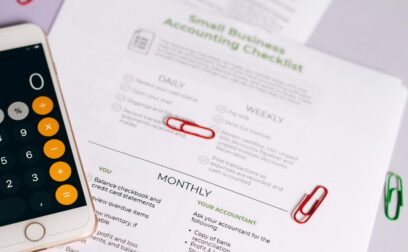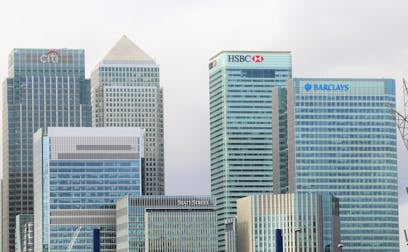When you’re looking for financing for your business, it’s important to understand how lenders calculate the total cost of the loan. If you plan on leasing or purchasing equipment or vehicles, you’ll probably hear the term money factor.
The money factor is the cost of financing on a monthly lease payment. It’s similar to the interest rate on a payment — but doesn’t incorporate certain fees, making it difficult to predict the true cost of a loan.
In this article, we’ll break down what the money factor is, how it works, and, most importantly — how to convert it into an interest rate so you can easily compare your financing options.
How do money factors work?
A money factor, also known as the lease factor or lease fee, is essentially the financing charge. It’s often expressed as a small decimal, such as 0.00125 or 0.0030. Occasionally, the money factor is expressed as a factor of 1,000, such as 1.5 instead of 0.0015. The higher the money factor, the higher your total lease payment.
Money factors are most commonly used in car or equipment leasing — or any asset that often depreciates over time. When you take out a loan, your monthly payments include depreciation, taxes, and interest. The money factor will determine the cost of interest.
How to calculate a money factor
In most cases, the lessor will provide the money factor to you. But it’s helpful to know how to calculate it yourself. Knowing the money factor can help you compare lease terms and even negotiate a better deal.
There are two ways to calculate the money factor — one is through the APR, and the other is through the information found on your lease.
APR method
This is the simplest way to calculator your money factor — you’ll need the offered interest rate, or APR. Once you have the interest, simply divide it by 2,400. The calculation is as follows:
Money Factor = Interest Rate / 2,400
For example, if the lessor is offering a 7% APR, the money factor would be:
7% / 2,400 = 0.0029
It’s important to note that money factors are expressed as 1/100th of a percent. So 0.0029 is equivalent to 2.9% APR.
It’s helpful to convert the money factor into an interest rate to make an apples-to-apples comparison between two leases or loans. If you already have the money factor, multiply it by 2,400 to find the APR.
Lease information method
You can also find the money factor by dividing the monthly lease charge by the adjusted capitalised cost (the negotiated selling price plus any fees and minus any down payment or trade-in credit) and the residual value (the expected value of the vehicle or equipment at the end of the lease).
The formula is as follows:
Money factor = Lease Charge ÷ (Capitalised Cost + Residual Value) x Lease term
If you already know the money factor, you can flip this formula around to find the monthly financing charges. For example, let’s say you’re considering leasing a piece of equipment with the following terms:
- Adjusted capitalised cost: €50,000
- Residual value: €10,000
- Lease term: 36 months
- Money factor: 0.0030
To calculate your base monthly payment, multiply the adjusted capitalised cost and residual value by the money factor:
(€50,000 + €10,000) x 0.0030 = €180 per month in financing charges
Money factor vs. interest rates
Money factors are primarily used for leases, while interest rates are used for loans and other types of financing. However, both essentially serve the same purpose — determining the cost of borrowing money.
One advantage of using a money factor is that it allows for easier calculation of monthly payments since it can be multiplied directly by the adjusted capitalised cost and residual value. Interest rates require an additional step of converting to a decimal before performing this calculation.
Money factors and interest rates are also often expressed differently. Interest rates are shown as a percentage, such as 5% or 8.9%, while money factors are expressed as a decimal, such as 0.00208 or 0.00297.
The money factor is primarily based on the borrower’s credit score — the stronger your credit, the lower the money factor (and the total cost of the loan) will be. Macroeconomic factors may also affect interest rates.
How to compare money factors and interest rates
When comparing financing options, you’ll want to consider both the money factor (or interest rate) and the length of the term. Here’s why:
Let’s say you’re comparing two lease offers for the same piece of equipment:
Offer 1 | Offer 2 | |
Money factor | 0.0024 | 0.0027 |
Lease term | 36 months | 48 months |
At first glance, Offer 1 might seem like the better deal because of the lower money factor. But, when you convert the money factors to interest rates, the picture changes.
Offer 1: 0.0024 x 2400 = 5.76% APR
Offer 2: 0.0027 x 2400 = 6.48% APR
Offer 2 has a slightly higher APR, and the longer lease term means you’ll make payments for an extra 12 months. This could result in paying more in financing charges over the life of the lease, even with the lower money factor.
Other factors to consider when comparing leasing options include:
- Residual value: A higher residual value means a lower depreciation charge and potentially lower monthly payments. But it also means the business leasing is assuming more risk.
- Mileage limits and fees: Most car leases come with annual mileage limits and fees for exceeding those limits. Consider how much milage you expect to use and factor these potential costs into your comparison.
- Maintenance responsibilities: Some leases include maintenance and repairs in the monthly payment; others leave that responsibility to the lessee.
- Early termination fees: If you think you might need to end the lease early, pay close attention to any early termination fees in the contract.
How Swoop can help
Whether you’re looking to lease equipment, secure a business loan, or explore other financing options, Swoop is here to help. Our platform makes it easier to compare offers from multiple lenders and find the best fit for your business.
We’ll crunch the numbers for you and provide clear, unbiased advice so you can make the best choice for your business. With Swoop, you can check available funding options, receive and compare personalised offers, and get expert guidance from our team of funding specialists.
Register with Swoop to explore your potential financing options within the app.




































 yet? Register here!
yet? Register here!